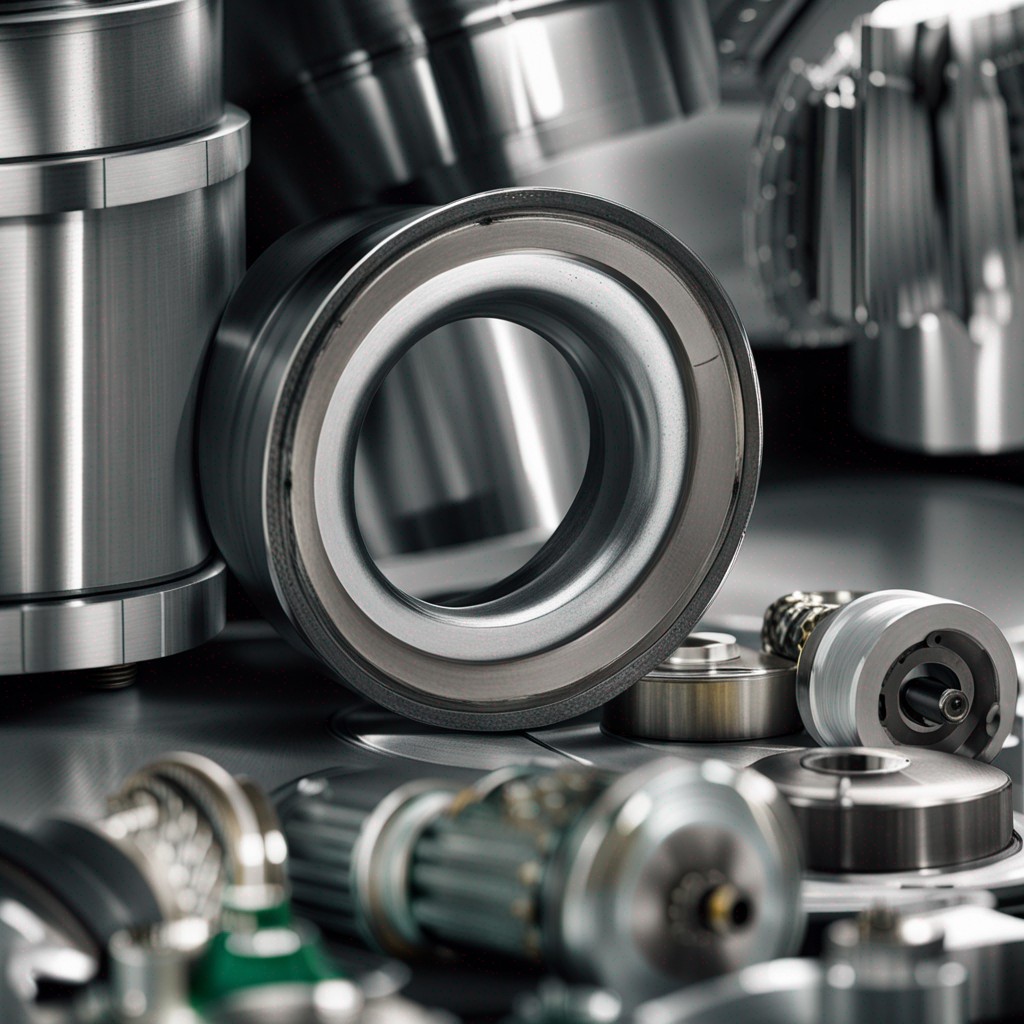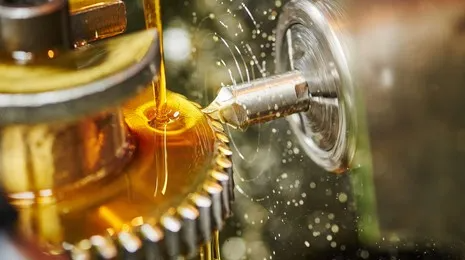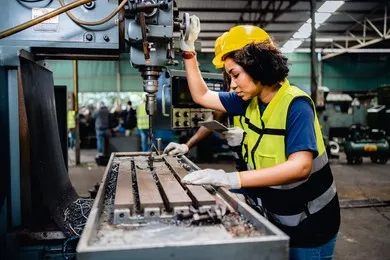In CNC machine tools, consistent and effective operation is paramount. The heartbeat of this smooth function lies in an often overlooked aspect: the lubrication system. The lubrication system in a machine tool plays a pivotal role in mitigating friction among moving parts. It provides a protective barrier that reduces wear and tear, thereby enhancing the machine tool's longevity. At CNC Yangsen, we understand the criticality of maintaining a robust lubrication system. We are committed to highlighting its significance and operational mechanism to ensure efficient usage.

A lubrication system plays a crucial role in the health and longevity of any CNC machine tool. To fully comprehend its importance, we must first grasp the adverse effects of friction.
When machine parts move against each other, they generate friction. This friction produces heat and causes wear, leading to operational inefficiency, increased energy consumption, and a shorter lifespan for the machine parts. This is the stage at which the lubrication system comes into play. It guarantees a barrier of lubricant - whether it's oil, grease, or a mixture of air and oil - that intervenes between moving components.
This layer of lubrication notably decreases friction, manages heat generation, and restricts wear and tear. Not only does this allow for more fluid and efficient functioning, but it also lessens the need for frequent repairs and replacements, leading to substantial cost savings. Hence, the lubrication system is the underappreciated protector that maintains the machinery in peak condition, facilitating its smooth and enduring operation.
CNC machine tools predominantly employ two types of lubrication systems—manual and automatic. Choosing between the two is not a matter of which is superior but which is more appropriate for your machine's specific needs.
The simplicity and affordability of manual lubrication systems make them the preferred option for smaller or less intricate machine tools. These systems consist of three essential elements: a lubricant reservoir for lubricant storage, a pump to enable its circulation, and nozzles to guide the lubricant to the required components.
The operator is tasked with controlling the application of the lubricant, which includes replenishing the reservoir and frequently triggering the pump. While this allows for human oversight, it also necessitates regular attention and time commitment from the operator. Therefore, manual systems are ideally suited for machinery not in constant or heavy-duty use, where the lubrication demands are moderate and easily managed by manual regulation.
As the machinery's complexity, size, and usage frequency increase, so does the need for more precise and regular lubrication. In such cases, automatic lubrication systems become invaluable.
These systems are a notch above the manual ones, comprising a more elaborate configuration that includes a lubricant reservoir, pump, controller, and a series of nozzles. The controller acts as the control center, scrutinizing the machine's lubrication requirements and instructing when and where the lubricant should be applied.
Automatic systems thus offer a significant advantage in terms of precision and regularity of lubrication. They reduce the possibility of human error or oversight, saving operators valuable time and effort that can be better used elsewhere. Additionally, their ability to provide consistent and optimal lubrication helps to extend the machine's lifespan, making them a worthwhile investment despite their higher upfront cost.
Selecting an appropriate lubricant is as essential as having a functional lubrication system in your CNC machine tool. The lubricant, which acts as the mediator between moving machine parts, directly impacts the machine's performance, lifespan, and energy efficiency. Therefore, choosing a lubricant that aligns with your CNC machine's specific needs and operational environment is crucial.

Oil lubricants have traditionally been the norm in the industry, primarily because of their superior lubricity and effective heat dispersion qualities. These lubricants lower friction, dissipate heat produced by the machine components, and eliminate any debris, preventing it from inflicting further wear and tear. Oil-based lubricants prove particularly efficient in high-speed, high-temperature situations where rapid heat dispersion is a necessity. Nevertheless, their liquid state can sometimes render them less suitable in applications requiring a lubricant to adhere to components or remain stationary. Consequently, factors like the application, as well as the oil's viscosity, volatility, and oxidation stability, should be weighed when picking an oil lubricant.

For low-speed or high-load applications, grease lubricants offer a compelling alternative. Their semi-solid nature allows them to stay in place, providing extended lubrication even in demanding conditions or where frequent lubrication isn't feasible.
Grease is a base oil held in a thickener, which releases the oil when subjected to mechanical stress. It excels in situations where sealing out contaminants, reducing noise, or lubricating vertical or overhead components is necessary. However, grease isn't suitable for high-speed applications due to its potential to cause overheating.
Choosing the proper grease involves considering the base oil viscosity, the type and amount of thickener, and any added performance additives. These factors must align with the machine's operating conditions, including temperature, speed, load, and environmental considerations.
Air-oil mist lubricants have emerged as a promising solution in pursuing more sustainable and efficient lubrication methods. This system delivers a precise mixture of air and oil to the machine parts, reducing the overall oil consumption while providing adequate lubrication.
Air-oil mist systems offer several benefits. They provide excellent penetration and coverage, even in complex machinery, and their cooler operating temperature extends the life of the lubricant and machine parts. Additionally, they provide an environmental advantage by significantly reducing oil waste and disposal costs.
Nonetheless, deploying an air-oil mist system demands specialized machinery and meticulous calibration to confirm the correct air-to-oil proportion, making it a more intricate and costly venture. Therefore, its implementation should be contemplated with long-term operational efficiency and environmental influence in mind.
A CNC machine tool is a substantial investment, and its longevity and performance largely depend on the regularity and quality of maintenance it receives. Among various maintenance activities, the upkeep of the lubrication system is critical. An optimally functioning lubrication system significantly reduces wear and tear, ensures smooth operations, and extends the machine's lifespan.

Regular inspections are the first step in maintaining your CNC machine's lubrication system. These should include more than just when the machine shows signs of trouble. Instead, make them a part of your regular maintenance schedule.
Components such as the lubricant reservoir, pump, nozzles, and controller must be inspected frequently for signs of wear, damage, or clogging. Inspections can identify potential issues early on, allowing you to address minor problems before they escalate into more significant, often more expensive, troubles.
Consider aspects such as:
1. Lubricant Reservoir: Check for proper lubricant level, cleanliness, and signs of contamination. Any debris or foreign particles in the reservoir can damage the pump or clog the nozzles.
2. Pump: Verify that the pump is working properly and dispensing the lubricant at the right pressure. Over time, the pump may deteriorate or lose its efficacy. If the lubricant isn't delivered at the appropriate pressure, the pump may require repair or replacement.
3. Nozzles: As for the nozzles, keep an eye out for any indications of blockage or harm. Nozzles direct the lubricant to the required parts, and if they're not working correctly, some components might not receive adequate lubrication.
4. Controller (in automatic systems): Regularly monitor the controller's performance. The controller regulates when and how much lubricant is dispensed so that any malfunction can disrupt the machine's optimal lubrication.
Regular lubricant changes are as essential as regular inspections. Over time, lubricants can lose effectiveness due to contamination, oxidation, or simply the breakdown of the lubricant's properties. Regular lubricant changes ensure your machine always has fresh, adequate lubrication.
The frequency of lubricant changes depends mainly on the type of machine, the workload it bears, and the specific lubricant used. Therefore, always refer to the manufacturer's guidelines for advice on lubricant change frequency. However, consider it a rule of thumb that regular lubricant changes contribute to a well-maintained, high-performing machine.
Maintaining an effective lubrication system goes beyond the physical upkeep of the system components and regular lubricant changes. Regular evaluation of the system's performance is equally crucial to ensure that the CNC machine tool operates optimally. Here are some key performance indicators that can provide insights into your system's efficiency and indicate when it may require intervention.
The first factor to assess is the condition of the lubricant itself. Just as the oil in a vehicle needs to be clean to perform its functions effectively, so does the lubricant in your CNC machine tool. Regularly inspect the lubricant for signs of degradation or contamination.
1. Colour: The lubricant may change over time due to contamination or degradation. This may suggest the existence of impurities or that the lubricant is deteriorating and losing its potency.
2. Consistency: Regarding consistency, if the lubricant seems too watery or viscous compared to its typical state, it might not supply sufficient lubrication. Too thin, and it may not stay in place; too thick, and it might not flow properly to reach all necessary components.
3. Contamination: Check for any signs of contamination, such as debris or water. These contaminants can impair the lubricant's function and damage the machine parts.
The timing and quantity of lubrication are critical for adequately functioning the CNC machine tool. These factors can be incredibly challenging to manage with manual lubrication systems.
1. Timing: Lubricant should be applied regularly, per the manufacturer's guidelines. Too long between applications can lead to increased friction and accelerated wear and tear.
2. Quantity: Conversely, applying too much lubricant can also have adverse effects. Over-lubrication can lead to seal damage, energy wastage and may even attract contaminants. Automatic systems should be calibrated to dispense the correct amount of lubricant at the right times.
Another vital performance indicator is the flow of lubricant to the machine parts.
1. Inadequate Flow: If the lubricant is not reaching all necessary components, it could mean the pump is not functioning correctly, or the nozzles are blocked. Either way, inadequate lubricant flow can lead to increased friction and wear.
2. Overabundance of Flow: On the other hand, excessive flow might signal an issue with the controller in automated systems or mishandling in manual ones. Not only can this result in lubricant waste, but it can also induce damage due to over-lubrication.
As CNC machining progresses, the lubrication systems critical to these machines' productivity and longevity evolve correspondingly. Staying abreast of burgeoning trends can assist businesses in maintaining their competitive edge and readiness for the future.
An escalating trend towards employing environmentally benign or "green" lubricants is evident. These lubricants are generally biodegradable and non-toxic, minimizing the environmental footprint of CNC machining processes.
Integrating IoT and AI technology into lubrication systems is another emerging trend. These "smart" systems have the capability to supervise and modify lubrication instantaneously, forecasting when lubrication is required, pinpointing potential complications, and even notifying operators about these issues. This trend towards automation and digitization enhances efficiency, diminishes downtime, and can notably prolong the lifespan of CNC machines.
In CNC machining, success is often determined by your machine tools' efficiency, precision, and durability. At CNC Yangsen, we understand this deeply and offer solutions that address these critical factors, ensuring you stay ahead of the competition.
As the industry evolves, so do we. CNC Yangsen consistently stays at the forefront of technological advancements. We provide an array of advanced CNC machine tools tailored to enhance your manufacturing procedures. In conjunction with this, we offer top-tier lubrication systems, both manual and automatic, intended to preserve your machine's durability and effectiveness.
Regardless of whether you require high-speed applications or low-speed precision tasks, our lubrication systems accommodate every requirement. We've curated our selection of lubricants, which includes oil, grease, and the increasingly popular air-oil mist, to meet various operational needs and environmental considerations.
At CNC Yangsen, we focus on delivering performance and reducing operational costs and environmental impact. We believe in building a future where businesses can achieve their objectives without compromising the environment. Our air-oil mist lubricants, for instance, are proof of our commitment to offering solutions that are as environmentally friendly as they are efficient.
We're dedicated to cultivating enduring relationships with our clients. When you opt for CNC Yangsen, you're not merely acquiring a product but allying with a team of specialists committed to the triumph of your enterprise. We accompany you at every stage, from selecting the appropriate lubrication system to offering continuous support and maintenance advice.
Within the complex realm of CNC machining, the lubrication system holds a pivotal role in maintaining durability and enhancing the performance of your machine tools. Grasping its significance, distinguishing between manual and automatic systems, and opting for the right lubricant are vital steps in ensuring the smooth and efficient functioning of your CNC machinery. At CNC Yangsen, we assist you in making these important decisions by supplying advanced CNC machine tools and lubrication systems tailored to your unique needs and environmental considerations.
Our commitment to performance excellence and environmental responsibility extends beyond our product lineup, as we offer superior services and ongoing support to nurture lasting, fruitful partnerships with our clients. With our state-of-the-art CNC solutions and expert guidance at your disposal, you can boost your business's operational efficiency, cut costs, and set the stage for a sustainable future.